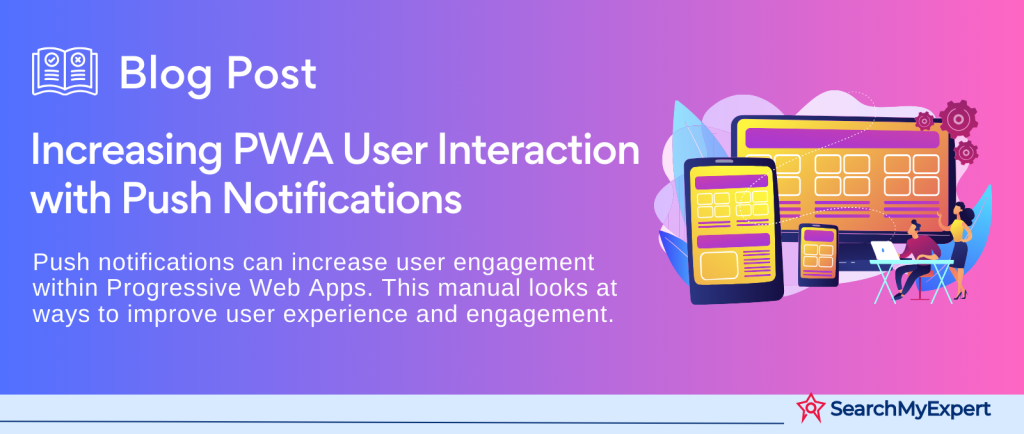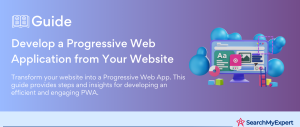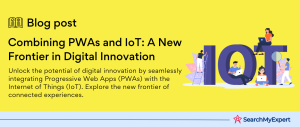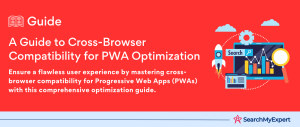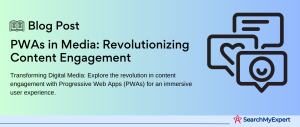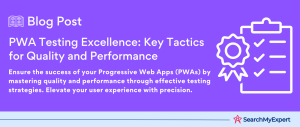Progressive Web Apps: Revolutionizing User Engagement
In the digital age, where the line between web and mobile experiences is increasingly blurred, Progressive Web Apps (PWAs) emerge as a transformative solution. At their core, PWAs are websites that leverage modern web capabilities to deliver an app-like experience directly within the web browser. These applications are not just responsive; they’re built to function seamlessly across various devices, redefining user interaction with web content.
Understanding Progressive Web Apps
- Enhanced Performance: PWAs offer fast, reliable, and engaging user experiences. They load like regular web pages but with the enhanced functionality of native applications.
- Offline Functionality:
One of the standout features of PWAs is their ability to work offline or with poor network conditions, thanks to service workers that cache key resources. - App-Like Experience: With features like full-screen mode, home screen icons, and platform-agnostic accessibility, PWAs blur the distinction between web and mobile apps.
- Up-to-Date Content: Utilizing service workers, PWAs can update their content in the background, ensuring users always have the most current information.
The Role of Push Notifications in PWAs
Push notifications in PWAs are more than just alerts; they are pivotal in driving user engagement and retention. Here’s why:
- Real-Time Interaction:
Push notifications allow real-time communication with users, keeping them informed and engaged. - Personalized Experience: Tailoring notifications based on user preferences and behaviors enhances personalization, encouraging more meaningful interactions.
- Increased Retention:
Regular and relevant notifications can increase app retention rates by reminding users to return to the PWA. - Broad Reach:
Unlike traditional apps, PWAs can send push notifications across different platforms and devices, widening their reach.
Push Notifications: A Deep Dive into the Game-Changer for User Interaction
In the realm of digital communication, push notifications have emerged as a vital tool for engaging users. These notifications, while simple in concept, play a crucial role in how users interact with both web and mobile applications.
What Are Push Notifications?
Push notifications are messages that pop up on a user’s device, delivered by an application or website. They serve various purposes – from alerting about new content, reminders, or updates to offering personalized messages. Unlike pull notifications, where users must open the app to receive new messages, push notifications are automatically sent to the user’s device, providing instant communication.
The Basic Functioning of Push Notifications
- Initiation:
The process begins with the app or website sending a push notification request to a push notification service. - Device Registration:
The user’s device registers with the push notification service, receiving a unique identifier. - User Consent:
For web push notifications, user consent is mandatory. Users must opt-in to receive notifications. - Message Dispatch:
Once consent is given, the service sends the notification to the registered device, where it pops up even when the app or website is not actively in use.
Web Push Notifications Vs. Traditional SMS or In-App Notifications
- Delivery Channel:
Web push notifications are delivered through internet browsers, while SMS notifications use cellular networks, and in-app notifications appear only when the specific app is open. - User Opt-In:
Web push notifications require explicit user consent, offering greater control and privacy. In contrast, SMS and in-app notifications may not always need explicit opt-in, depending on the platform and app settings. - Cross-Platform Functionality:
Web push notifications work across different browsers and devices, enhancing reach. SMS is limited to mobile phones, and in-app notifications are confined to the app itself. - Cost-Effectiveness:
Sending SMS notifications can incur costs, whereas web push notifications are generally free, making them a cost-effective solution for businesses. - Personalization and Targeting: Both web push and in-app notifications allow for high levels of personalization and targeting based on user behavior and preferences. SMS notifications are typically more generic.
- Internet Dependency: Web push notifications require an internet connection, while SMS can be received without internet access.
Leveraging Push Notifications in PWAs: A Strategic Advantage
Progressive Web Apps (PWAs) have significantly changed the digital landscape, and a key element in their arsenal is the use of push notifications. These notifications are not just a method of communication; they are strategic tools that can enhance various aspects of user interaction and business performance.
Boosting User Engagement and Retention
- Constant Connectivity:
Push notifications keep users connected with the app, even when they are not actively using it. This constant touchpoint increases user engagement by reminding them to revisit the app for new content or updates. - Personalized Alerts:
Tailored notifications based on user preferences and behavior can significantly enhance user engagement. Personalization makes users feel valued, increasing the likelihood of app revisitation and prolonged usage.
Elevating Conversion Rates and Sales
- Targeted Promotions:
Push notifications allow businesses to send targeted promotions and offers directly to users, leading to increased conversions. These timely prompts can nudge users towards making a purchase or availing of a service. - Abandoned Cart Reminders:
For e-commerce PWAs, push notifications can remind users of abandoned carts, encouraging them to complete their purchases, thereby boosting sales.
Enhancing User Experience and App-Like Feel
- Seamless Interaction:
Push notifications contribute to a seamless, uninterrupted user experience, similar to native apps. They provide necessary information and updates without the user needing to open the app. - Customizable Content: The ability to customize the content and timing of notifications makes the user experience more relevant and less intrusive, contributing to a positive perception of the PWA.
Facilitating Real-Time Communication and Timely Updates
- Instant Alerts: Users receive notifications in real-time, which is crucial for time-sensitive information like news alerts, transaction confirmations, or event reminders.
- Keeping Users Informed:
Regular updates keep users informed about new features, content, or changes in the PWA, ensuring they always have the latest information at their fingertips.
Building Brand Awareness and Customer Loyalty
- Consistent Brand Presence: Regular, well-crafted push notifications ensure that the brand remains at the forefront of the user’s mind, reinforcing brand presence.
- Loyalty Enhancement: By providing value through notifications, whether it’s through informative content or exclusive offers, PWAs can foster a sense of loyalty among users.
Navigating the Implementation of Push Notifications in PWAs
Implementing push notifications in Progressive Web Apps (PWAs) is a critical step in enhancing user engagement and driving business goals. By leveraging the right tools and following best practices, developers can effectively integrate this functionality to maximize its impact.
Selecting the Right Libraries and Frameworks
Several libraries and frameworks have proven effective in implementing push notifications in PWAs:
- Pushwoosh:
A versatile platform offering a wide range of features including cross-platform support, real-time analytics, and automated messaging. - OneSignal:
Popular for its ease of use, OneSignal provides a comprehensive solution for push notifications, including A/B testing, segmentation, and automated delivery. - Firebase Cloud Messaging (FCM):
Provided by Google, FCM is a reliable and cost-effective option, offering seamless integration with other Firebase services and Google Cloud.
Optimizing Permission Request Workflows
Gaining user consent for push notifications is a delicate process. Here are some best practices:
- Timing is Key:
Avoid asking for permission immediately upon app load. Instead, wait until the user has interacted with your PWA and understands its value. - Explain the Benefits: Clearly communicate the benefits of enabling notifications. Users are more likely to opt in if they understand how notifications will enhance their experience.
- A/B Testing:
Experiment with different timings and wording to find the most effective approach for your audience.
Crafting Compelling Notification Content
The content of the notification is crucial for user engagement. Here are tips to make them more compelling:
- Personalization:
Tailor content to individual user preferences and behaviors to make notifications more relevant and engaging. - Clarity and Brevity:
Keep notifications concise and clear. Users should understand the message at a glance. - Strong Call-to-Action:
Include a compelling call-to-action to encourage users to interact with the notification.
Scheduling and Targeting Notifications
To maximize the impact of push notifications, it’s important to schedule and target them effectively:
- User Segmentation:
Segment your user base based on behavior, preferences, or demographics to send targeted notifications. - Optimal Timing:
Analyze user data to determine the best times to send notifications, increasing the likelihood of engagement. - Frequency Management: Be mindful of the frequency of notifications to avoid overwhelming or annoying users.
Mastering Analytics and Optimization for Push Notifications in PWAs
In the dynamic landscape of Progressive Web Apps (PWAs), the effective use of push notifications hinges on continuous analytics and optimization. By tracking key metrics, employing A/B testing, and understanding user behavior, developers can refine their notification strategies to maximize engagement and minimize user churn.
Tracking Vital Metrics
- Click-Through Rates (CTRs):
CTR is a critical metric that measures the effectiveness of push notifications in engaging users. A high CTR indicates that the content of the notification resonates with the audience and prompts action. - Unsubscribe Rates:
Monitoring how many users opt out of receiving notifications can provide insights into user preferences and the overall acceptance of your notification strategy. - Engagement Metrics:
Apart from CTR, other engagement metrics like session time, frequency of app visits post-notification, and user retention rates offer a broader understanding of the impact of your notifications.
Employing A/B Testing for Enhanced Performance
A/B testing is pivotal in fine-tuning the notification strategy:
- Testing Different Elements:
Experiment with various elements of notifications, such as the wording, timing, and frequency, to determine what works best for your audience. - Analyzing Results:
Analyze the performance of different variants to understand user preferences and behaviors. This data is invaluable in crafting more effective notifications.
Segmentation for Targeted Notifications
User segmentation is crucial for delivering personalized and relevant notifications:
- Behavior-Based Segmentation:
Group users based on their interactions with your app, such as frequent users vs. occasional visitors. - Preference-Based Segmentation:
Segment users according to their stated preferences and interests, ensuring that notifications are aligned with their expectations.
Avoiding Notification Fatigue
While notifications are powerful tools, overuse can lead to notification fatigue, causing users to disengage:
- Balancing Frequency and Relevance:
Strive to find a balance between notification frequency and relevance. Overloading users with too many notifications can lead to irritation and opt-outs. - Respecting User Choices:
Honor user preferences regarding the types and frequencies of notifications. Providing options for users to customize their notification settings can enhance user satisfaction and trust.
Maintaining User Trust
Maintaining user trust is paramount in a successful notification strategy:
- Transparency and Privacy:
Be transparent about how user data is used for push notifications. Upholding privacy standards is essential in building and maintaining trust. - Quality over Quantity: Focus on the quality and relevance of each notification, rather than bombarding users with frequent, less meaningful messages.
Push Notifications in Action: Success Stories Across Industries
The implementation of push notifications in Progressive Web Apps (PWAs) has proven transformative across various industries. By examining real-world examples and case studies, we can gain valuable insights into their effectiveness and best practices.
E-Commerce: Boosting Sales and Engagement
Case Study: XYZ Fashion Store PWA
- Implementation: XYZ Fashion Store integrated push notifications to alert users about new collections, sales, and personalized offers.
- Impact:
Post-implementation, XYZ observed a 30% increase in user engagement and a 25% uplift in conversion rates. - Key Takeaway: Timely and relevant sale notifications can significantly drive both engagement and sales in e-commerce PWAs.
Media and News: Enhancing Information Dissemination
Case Study: NewsByte PWA
- Implementation: NewsByte used push notifications for breaking news and content recommendations based on user preferences.
- Impact:
This strategy led to a 40% increase in daily active users and a 35% higher click-through rate for notifications. - Key Takeaway: For media PWAs, real-time, personalized news updates can drastically improve user retention and engagement.
Travel and Hospitality: Personalizing User Experiences
Case Study: TravelBuddy PWA
- Implementation:
TravelBuddy deployed push notifications for deal alerts, travel reminders, and location-based recommendations. - Impact:
They saw a 50% increase in last-minute bookings and a 20% rise in user retention. - Key Takeaway: In travel PWAs, notifications that offer timely, personalized information can enhance the customer experience and boost bookings.
Healthcare: Improving Patient Communication
Case Study: HealthFirst PWA
- Implementation:
HealthFirst used push notifications for appointment reminders, health tips, and medication alerts. - Impact: There was a notable 60% reduction in missed appointments and a significant increase in patient engagement.
- Key Takeaway: Healthcare PWAs can leverage notifications to improve patient compliance and engagement.
Education: Fostering Learning Engagement
Case Study: EduLearn PWA
- Implementation:
EduLearn implemented notifications for course updates, assignment deadlines, and educational content. - Impact:
They reported a 45% increase in course completion rates and higher student participation. - Key Takeaway: Educational PWAs can use push notifications to keep students informed and engaged with their learning journey.
Inspiration for Future Implementations
These case studies demonstrate that well-crafted push notifications can lead to tangible improvements in user engagement and business objectives. For PWAs considering the implementation of push notifications, the key is to ensure that these alerts are timely, personalized, and add real value to the user experience. By doing so, PWAs can not only retain users but also deepen their engagement, fostering a loyal and active user base.
Embracing the Future: Push Notifications in Progressive Web Apps
As we conclude our comprehensive exploration of push notifications in Progressive Web Apps (PWAs), it’s essential to encapsulate the key benefits and considerations that make these notifications a powerhouse in the digital landscape. Looking ahead, the evolving nature of push notifications promises exciting developments, further enhancing the capabilities of PWAs.
Recapping the Benefits and Considerations
- Enhanced User Engagement:
Push notifications significantly increase user engagement by providing timely and relevant content, directly influencing user retention and activity. - Improved Conversion Rates:
For businesses, well-strategized notifications can lead to higher conversion rates and sales, making them a crucial tool for growth. - Personalization and Relevance:
The success of push notifications lies in their ability to be personalized, catering to the specific interests and behaviors of users. - User Experience Enhancement:
Push notifications contribute to an app-like experience in PWAs, making them more interactive and user-friendly. - Maintaining User Trust:
It’s imperative to balance frequency and relevance to avoid notification fatigue and to respect user privacy and preferences.
The Evolving Landscape and Upcoming Trends
- AI and Machine Learning:
The integration of AI and machine learning is set to make push notifications even more intelligent and personalized. - Rich Media Notifications:
The future may see an increase in the use of rich media in notifications, including images, videos, and interactive elements. - Location-Based Notifications: Enhanced location-based services could allow for more precise and contextually relevant notifications.
- Integration with Emerging Technologies: As IoT and AR/VR technologies mature, push notifications in PWAs may start interacting with these technologies to provide more immersive experiences.
A Call to Action for PWAs
In the rapidly evolving digital world, PWAs stand to gain significantly by leveraging the power of push notifications. These notifications are not just tools for communication; they are catalysts for creating deeper user connections, driving engagement, and fostering business success. As the landscape of push notifications continues to advance, PWAs that adapt and innovate will find themselves at the forefront of an enhanced user experience and digital success.
Conclusion:
As we encapsulate our journey through the dynamic world of push notifications in Progressive Web Apps (PWAs), we recognize their profound impact on digital interaction and business success. These tools are not just about delivering messages; they are pivotal in creating engaging, personalized, and interactive experiences that resonate with users. Looking ahead, the integration of AI, rich media, and emerging technologies promises to elevate push notifications to new heights, making them more relevant, contextual, and immersive. For PWAs aiming to stay at the cutting edge of digital innovation, embracing and evolving with push notifications is not just an option but a necessity for enhanced user engagement and sustained success. The future of PWAs is bright, and push notifications are undoubtedly a key part of this luminous trajectory.
Innovate your online platforms with our Progressive Web App Services.
Table of Contents
Toggle
